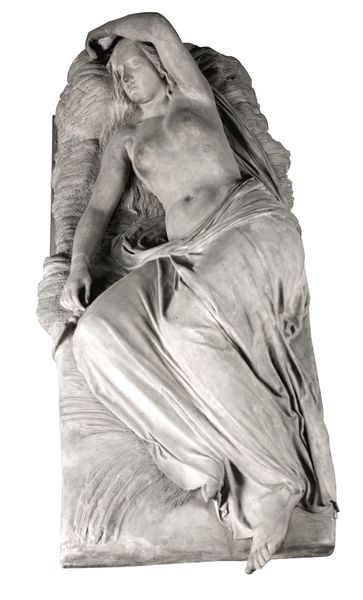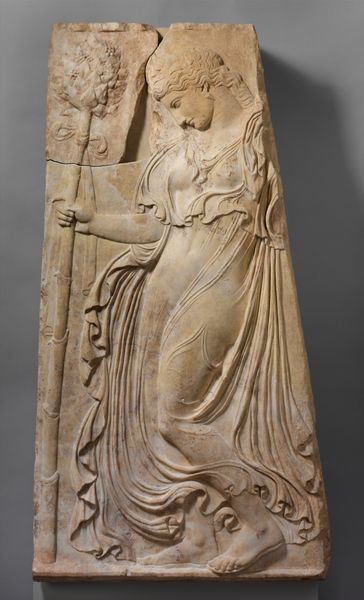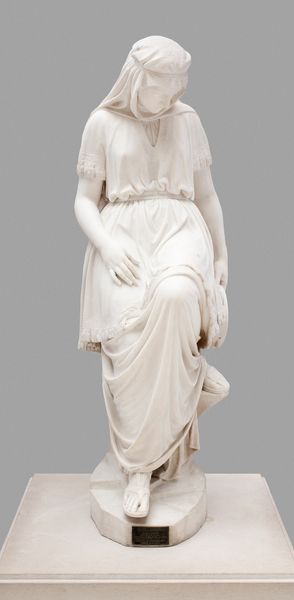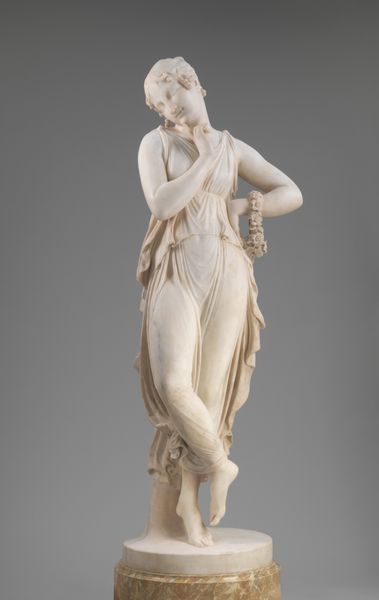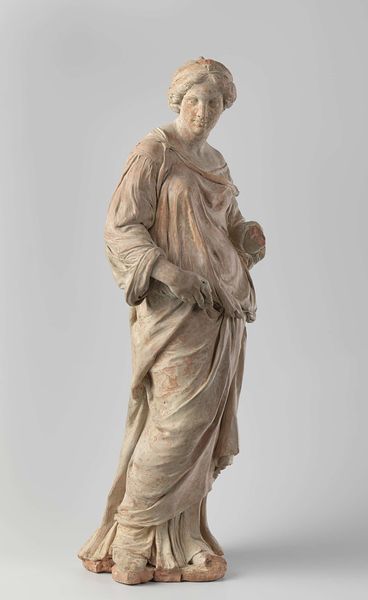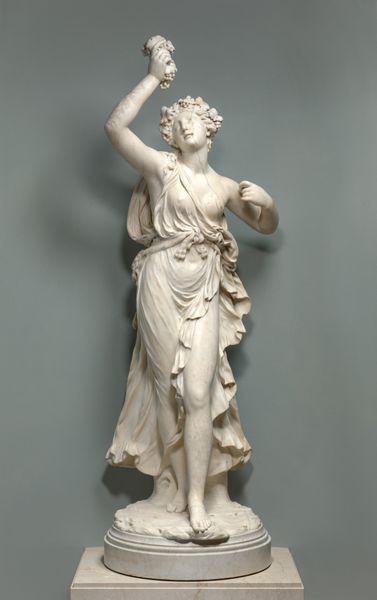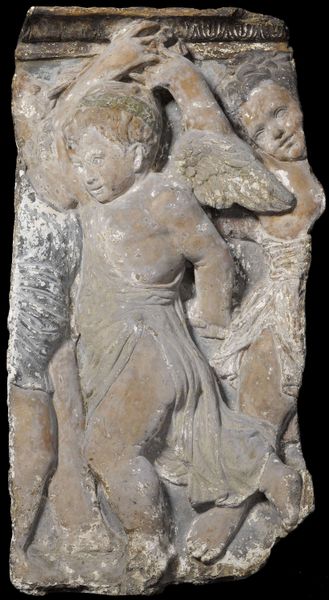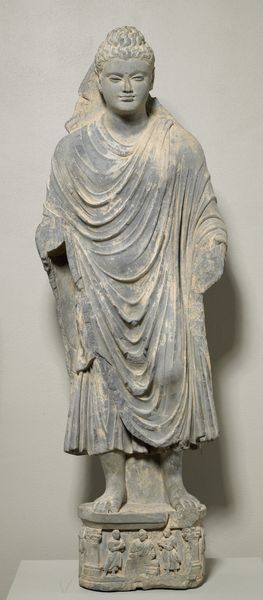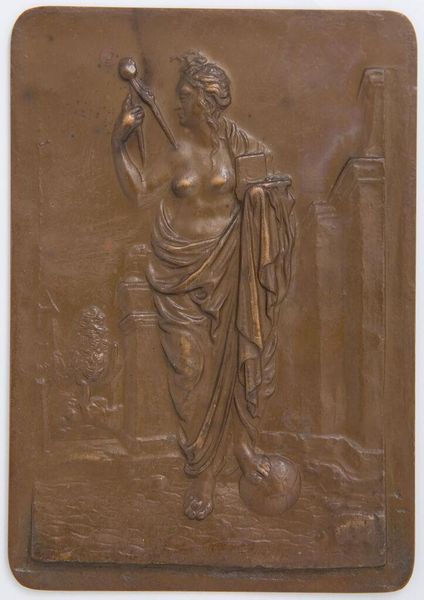
sculpture, marble
#
portrait
#
stone
#
sculpture
#
sculpture
#
history-painting
#
marble
Dimensions: 48.5 cm (height) x 196.5 cm (width) x 65.2 cm (depth) (Netto)
Editor: This is "Gravmæle over Alma Goethe," a marble sculpture created in 1846 by J.A. Jerichau. The recumbent figure immediately brings to mind classical funerary monuments. What do you make of its historical context and the artist’s choices? Curator: It is interesting to consider this sculpture within the context of 19th-century funerary art and the public role such monuments played. Given that it memorializes Alma Goethe, a member of the prominent Goethe family, we have to think about its function as a representation of social standing and cultural legacy. Do you think this work attempts to align the Goethe family with particular values or ideologies? Editor: Definitely, the neoclassical style does lend a certain air of timeless importance and maybe even a claim to a noble lineage or refined sensibilities. It’s interesting to see how a private grief is sculpted into a public statement. But what about the romantic era influences that may lead us to the Pre-Raphaelites? Curator: Precisely! The sentimental aspects are important, too. The romantic, flowing dress, the flowers, and the overall emotional tone reflect trends of the period. One might argue it balances private sentiment with a more formal declaration of status. Editor: So, in a way, it’s doing double duty – both expressing personal mourning and reinforcing the Goethe family's place within the cultural landscape? Curator: Exactly. Consider who would have seen this memorial, and what messages the sculpture would convey about grief, legacy, and social identity at the time it was created. Public art pieces are nearly always about the intersection between public and private domains, particularly ones that represent a significant figure. Editor: This has given me a richer perspective; I am reminded that art always exists in relation to its audience, era, and intended impact. Thanks! Curator: And I’m reminded of how effectively historical styles may reflect both cultural statements and profound sentiment, playing upon a very fine line.
Comments
No comments
Be the first to comment and join the conversation on the ultimate creative platform.
